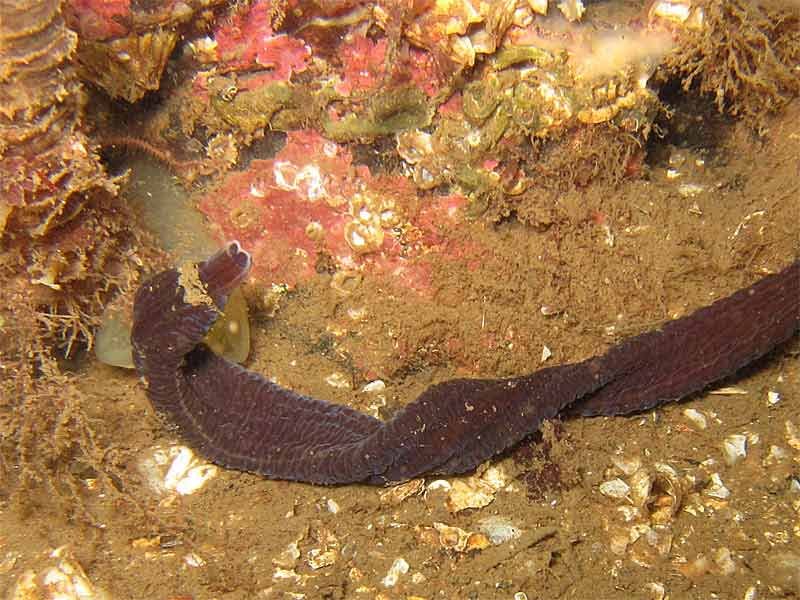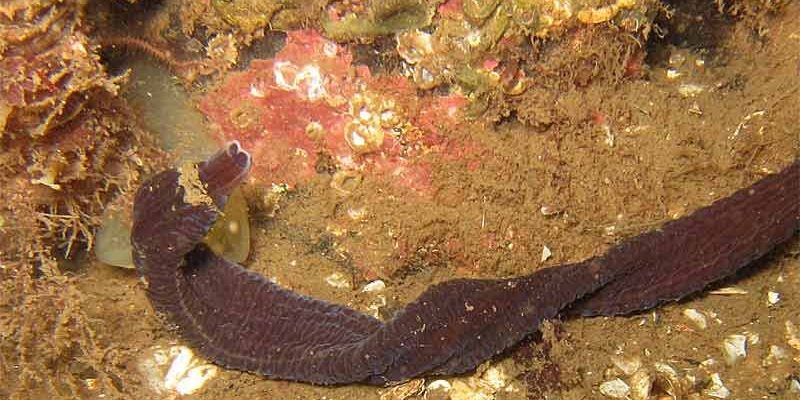
Bootlace worms, or *Lineus longissimus*, may seem a bit quirky with their lengthy, ribbon-like bodies, but they play an essential role in the coastal habitats they call home. Picture a beautiful coastline, where sand meets saltwater, and hidden beneath the surface lies an entire world of biodiversity. In this article, we’re going to take a closer look at where bootlace worms are found, what type of habitats they prefer, and why these environments are so crucial to their survival.
Understanding Bootlace Worms
Before we dive into their habitats, let’s take a moment to understand what bootlace worms really are. These fascinating creatures are known for their incredible length—some can reach up to 180 feet! Despite their size, they are often overlooked. They belong to a group of marine organisms called nemerteans, which are known for their soft bodies and remarkable regenerative abilities.
Bootlace worms are not just long; they also have a unique way of hunting. They use a sticky substance to catch their prey, which mainly consists of small animals like crustaceans and worms. This sticky, gooey approach to feeding is one of the reasons they have adapted so well to their coastal habitats. They thrive in environments where their prey is plentiful and conditions are just right.
So, what kind of coastal habitats do these intriguing creatures inhabit? Let’s explore!
Where Bootlace Worms Call Home
Bootlace worms are primarily found in coastal waters. This means they hang out in regions where the ocean meets land. The rich nutrients present in these environments support a wide range of marine life, which, in turn, feeds the bootlace worms. You might find them in:
- Estuaries
- Intertidal zones
- Rocky shores
- Soft sediment areas
Estuaries, for instance, are places where freshwater from rivers mixes with saltwater from the ocean. This unique combination creates a nutrient-rich environment perfect for bootlace worms. In these areas, the worms can burrow into the sand or mud, making them hard to spot.
Similarly, the intertidal zone is that fascinating area between high and low tide. The changing water levels provide the worms with varying conditions to thrive in, making it a great habitat for them. Here’s the thing: the sandy and muddy substrates allow these worms to hide and hunt effectively, contributing to their survival.
Estuaries: A Booming Ground for Bootlace Worms
Estuaries are truly special places. They serve as nurseries for many marine animals, and bootlace worms fit right into this bustling ecosystem. You see, when freshwater from rivers flows into the ocean, it brings along various nutrients—think of it as a buffet for marine life. Bootlace worms take advantage of this bounty.
Here’s a fun fact: estuaries often have plenty of decaying plant matter, which keeps the food chain thriving. With small fish and crustaceans attracted to these nutrients, bootlace worms find plenty of meals to enjoy. They burrow into the soft mud, waiting patiently for their next snack to swim by.
The mix of fresh and saltwater also creates unique salinity levels, and bootlace worms can adapt to these changes. Their ability to thrive in such varied conditions is pretty remarkable when you think about it.
Intertidal Zones: A Diverse Habitat
Moving a bit further along the coast, let’s talk about the intertidal zones. Here, the ocean meets the land, and the tides create a constantly changing environment. This area can be full of life, from crabs scuttling along rocks to anemones waving in the gentle surf.
Bootlace worms love this dynamic setting! During low tide, they can be found nestled in the sand, safe from predators. When the tide comes in, they have access to all sorts of food from the ocean. The changing conditions force them to adapt quickly, which they do with ease.
These worms are not just sitting around, waiting for the tide to come back in. They’re active hunters, using their sticky threads to snag unsuspecting prey as it floats by. Honestly, their adaptability to such a shifting environment is a testament to their resilience in coastal habitats.
Rocky Shores: A Tough but Rewarding Habitat
Bootlace worms also find a home along rocky shores. These areas might seem harsh, with crashing waves and sharp rocks, but they offer unique shelter and food sources. Here, the worms can hide in the nooks and crannies of the rocks, avoiding predators and waiting for the right moment to hunt.
The cool thing about rocky shores is that they’re often teeming with life. Seaweed and barnacles cling to the rocks, creating a lush feeding ground. Bootlace worms can capitalize on this by snaking through the crevices, seeking out small creatures that call the rocky landscape home.
You might be wondering if these worms can handle the rough waves. The answer is yes! Their ability to adapt is what makes them so successful in different coastal environments. They can stay hidden and wait for calmer waters to venture out and hunt.
Soft Sediment Areas: Hidden Treasures
Last but not least, let’s explore soft sediment areas. Think of these as the ocean’s cozy bed, filled with fine sand and mud. These habitats are perfect for bootlace worms because they can easily burrow into the substrate, laying in wait for their next meal.
Soft sediments are often rich in organic matter, which supports a wide variety of marine life. Worms, crustaceans, and other tiny creatures thrive here, providing a perfect hunting ground for bootlace worms. They can stretch out their long bodies through the sediment, feeling around for prey, making them highly efficient hunters.
Here’s the thing: these soft habitats also protect bootlace worms from predators. By burrowing beneath the surface, they not only find food but also stay safe from larger fish and other threats. Their ability to live in such a hidden yet abundant environment showcases just how resourceful they are.
The Importance of Coastal Habitats
Understanding where bootlace worms are found helps us appreciate the significance of coastal habitats. These environments are more than just pretty views—they’re vibrant ecosystems full of life. By supporting creatures like the bootlace worm, these habitats contribute to the overall health of our oceans.
Coastal habitats also play a crucial role in protecting shorelines and supporting biodiversity. They help filter pollutants, provide shelter for countless marine species, and even serve as nurseries for fish. The interconnectedness of these systems is essential, and every creature, including bootlace worms, plays a part.
As we continue to explore and understand these ecosystems, it’s vital to protect them. Pollution, climate change, and human activities threaten these delicate environments. By preserving coastal habitats, we not only ensure the survival of species like bootlace worms but also maintain the health of our oceans.
In conclusion, bootlace worms are remarkable creatures that thrive in various coastal habitats, from estuaries and intertidal zones to rocky shores and soft sediment areas. Each environment offers unique benefits, allowing these worms to play a vital role in the marine ecosystem. So, next time you’re at the beach, take a moment to appreciate the hidden life beneath the waves and the importance of protecting these diverse habitats.

